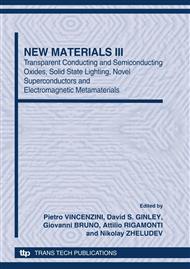p.130
p.136
p.141
p.147
p.155
p.161
p.167
p.173
p.181
Reentrance of Macroscopic Quantum Tunneling in Cuprate Superconductors
Abstract:
We present a theoretical analysis of the transition from thermal activation (TA) regime to the macroscopic quantum tunneling (MQT) regime of the decay from a metastable persistent current state in grain boundary junctions of cuprate superconductors. This transition is conventionally characterized by a single crossover temperature determined by the potential profile and dissipative mechanisms. It is shown that due to the existence of low energy bound states (mid-gap states) for various relative orientations of the crystal axes, there exists a window of parameters where one finds, with lowering temperature, an inverse crossover from MQT to TA, followed by a subsequent reentrance of MQT. It is shown that these predictions are in reasonable agreement with recent experiments.
Info:
Periodical:
Pages:
155-160
Citation:
Online since:
October 2010
Authors:
Price:
Сopyright:
© 2010 Trans Tech Publications Ltd. All Rights Reserved
Share:
Citation:



